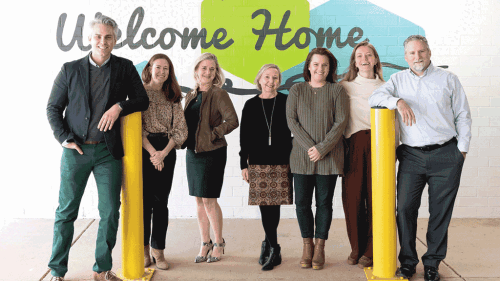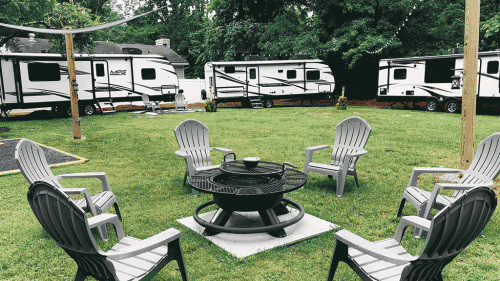This article appeared in the Spring issue of Urban Land on page 74.
Situated 12 miles (19 km) from downtown Austin, Texas, developer Brookfield Residential’s Easton Park is one of the places where the real estate industry is figuring out how to provide housing that people of modest means can afford.
The 1,500-acre (607 ha) master-planned community will include some traditional three-bedroom houses on expansive lots, the sort that once fulfilled the American dream for many of the parents of today’s millennial homebuyers. But to fit within the financial constraints faced by first-time purchasers from the millennial generation, Brookfield also has come up with a format for a detached single-family home that is as small as 1,000 square feet (93 sq m).
“It’s not quite a tiny house,” explains Logan Kimble, Brookfield’s director of land development in Austin. “It’s still got a couple of bedrooms.”
To scale down the cost even further, the homes will be sold in a condominium regime, so that purchasers will own the structure but not the land beneath it. As a result, the price is less than $200,000.
“This is a relatively new idea,” Kimble says. “Ten years ago, if you talked about a condo, it was some sort of an attached unit, maybe stacked.” But instead, the house “looks like a smaller version of the single-family home that we’re all used to.” The 1,000-foot home also offers young professionals another advantage in that their yards are maintained as part of their homeowners association dues. “Your grass doesn’t get overgrown when you’re gone for two weeks,” Kimble notes.
In exchange for reduced space, though, “you have to do a better job of providing connected amenities throughout a community,” Kimble says. Buyers, for example, may be willing to trade a traditional backyard for access to a public park down the street.
That is the sort of innovation that may be necessary to solve the nation’s attainable housing dilemma. As the long, slow economic recovery of the past decade gains momentum, millennials who have postponed starting families are belatedly entering the housing market in great numbers. That, in turn, is causing a surge in demand for for-sale homes that are within the reach of households with $100,000 or less in annual income. With the resale market unable to absorb all those buyers, building more new homes seems the only way to meet the demand. At the same time, though, developers face a daunting array of challenges that they did not have when they erected starter homes for previous generations, ranging from escalating land costs and entitlement fees to shortages of construction labor.
In order to deliver product that fits into the price range, the residential real estate sector has been compelled to innovate. Developers are experimenting with ways to increase density in new communities, putting more homes on smaller lots and streamlining interiors to be more compact and efficient, while still providing enough room for families’ everyday activities. Others are working to fill the attainability gap with a new generation of manufactured housing. They are creating technologically sophisticated “smart” home units that can be built on factory assembly lines and then installed on lots with minimal labor, and which even can be combined to form whatever size dwelling the homeowner needs.
Why Such Short Supply?
Millennials, who were hit at the start of their working careers by the late-2000s economic downturn, stayed with their parents or in rental housing for longer than previous generations, analysts say. “The Great Recession was very damaging to millennials,” explains Arthur C. Nelson, a professor of planning and real estate development at the University of Arizona. “It probably set them back a decade in terms of income and ability to purchase a home.”
But millennials’ fortunes are improving, just as many reach the age when they are starting families, and they are belatedly entering the housing market in droves. As a result, sales to first-time homebuyers grew to 601,000 in the third quarter of 2017, the best performance since 2000, according to a recent report by Genworth Mortgage Insurance. First-time buyers accounted for 40 percent of all single-family units sold. Sales of new houses in the modest $200,000-to-$250,000 price range were up 20 percent from a year before.
But the demand for attainable housing is even greater, so much so that the real estate industry is scrambling to come up with enough homes.
“What’s different in this housing cycle is that, typically, demand starts at the entry level, which creates a ripple effect and allows people to move up,” says Bloomberg Intelligence housing analyst Drew Reading. “But in this cycle, the demand started in the ‘move up’ segment, because builders were able to get higher margins from those homes.”
Conversely, little incentive existed until recently for builders to create affordable entry-level housing, because there were not enough young buyers who could afford it, and mortgage financing was tight, he said.
In addition, Reading says, much of the lower-priced housing inventory was scooped up by investors during the downturn and converted to rental property, leaving little to fill first-time buyers’ needs. That has increased the demand for attainable new housing units.
But developers also face tougher challenges in meeting that demand than they did a generation ago. Land costs have risen, as have the costs of meeting regulatory requirements, such as environmental impact fees, according to Reading.
They also have to contend with a shortage of construction labor. More than 1.7 million U.S.-born construction workers left the housing sector after the 2008 downturn, according to a January 2018 study by the National Association of Home Builders, and they have been slow to return. “A lot of those workers are now working on multifamily construction,” explains Andres Carbacho-Burgos, senior economist at Moody’s Analytics.
Innovating for Middle-Class Needs
Finding ways to work within those constraints requires creativity and a data-driven understanding of millennial homebuyers, both in terms of their needs and the trade-offs they are willing to accept.
“All of the research we’re doing on millennial homebuyers indicates that there’s a lot of difference in how they want to live,” says Linda Mamet, vice president of corporate marketing for TRI Pointe Group, headquartered in Irvine, California, which includes regional homebuilders in eight states, mostly in the West. “They’re certainly a lot different from baby boomers.”
Unlike boomers, who often were willing to commute long distances to get an affordable house, millennials are more likely to trade off size for proximity to work, Mamet says. And they are less interested than boomers in spending their weekends trimming the hedges. “They value their time,” she says. “They want private outdoor space for entertainment, relaxation, connecting with friends and family, as opposed to doing yard work.”
TRI Pointe’s research guided the creation of the Responsive Home, a prototype that has served as the basis for homes in the Strada neighborhood in the master-planned community of Inspirada in Henderson, Nevada. The design can be scaled from 2,145 to 2,500 square feet (199 to 232 sq m) with additional optional living suites on the third floor or over the garage, either for rentals or to accommodate a multigenerational family. To make the limited interior space seem larger, the Responsive Home concept uses an open floor plan in which the great room, kitchen, and dining area are combined, with plenty of windows to provide natural light. In addition, doorways allow the interior to blend with the outside spaces. “You can entertain larger gatherings both indoors and outdoors,” she says. “It’s very seamless.”
Since millennials are not as car-oriented as boomers, it also is possible to dispense with multicar garages. “That can make a significant difference in the price of a home,” says Mamet, who says that the homes in Strada are going for prices in the low $400,000s.
In Montgomery County, Maryland, Bob Youngentob, president and chief executive officer of development firm EYA, says that millennials’ preference for living in walkable neighborhoods with access to public transit means that developers have to be more creative about finding close-in sites. It is important to look for “locations that are emerging and may not represent the highest land prices in a given market,” he says.
Youngentob’s company is partnering with the county government to develop Westside at Shady Grove Metro, a 1,500-home community near a Red Line Metrorail stop, on a site that previously housed various county maintenance facilities. The project includes a mix of market-rate housing, workforce units priced in the low-$400,000 range, and homes in the county’s Moderately Priced Dwelling Unit (MPDU) program, targeting buyers who earn 60 percent or less of the county’s median income. “The affordable alternatives are mixed throughout the multifamily and townhome portions, and are indistinguishable from the market-rate units,” Youngentob says.
It is important to understand that millennial homebuyers have different priorities from what their parents once wanted, according to Youngentob. “Thirty years ago, the goal may have been a traditional single-family home in suburbia with a yard,” he says. “Today, the goals tend to be walkable locations, more access to public transit, and a lower-maintenance environment because the husband and wife are working full time.”
Architect Daniel Parolek, a founding principal in Berkeley, California–based Opticos Design, believes that a key to increasing housing attainability is reviving what he has termed the “missing middle,” the housing formats that are intermediate steps on the continuum between detached single-family homes and mid-rise apartment complexes. “All of these types in the middle—duplexes, courtyard apartments, and so on—exist in every pre-1940s neighborhood,” Parolek says. “But we’ve built very few of them over the past 50 to 60 years.”
Parolek envisions the missing middle as including both rental and for-sale homes for entry-level purchasers. In the master-planned community of Daybreak in the Salt Lake City area, for example, Parolek’s firm, working for developer Holmes Homes, figured out how to use two awkwardly shaped lots by creating compact mews-style homes whose long facades opened to a central walkway. The resulting product could be delivered at prices of $180,000 to $220,000—about $25,000 less than a conventional townhouse, according to Parolek.
Manufacturing Reduced Costs
Others think that attainability ultimately may require changing the way in which homes are constructed.
“Homebuilders need to move toward lower-cost, less-labor-intensive methods of building homes,” says Mark Boud, senior vice president and chief economist of housing market intelligence firm Metrostudy. He and others see factory-built modular homes as a promising solution. “They can be built at various densities, and there’s lower labor cost to assemble,” he says.
In Pittsburgh, a startup company called Module has developed a web-based homebuilding platform that collects data from a homebuyer about his or her current needs and financial means, and then uses that information to match the person with starter home designs ranging from a 640-square-foot (60 sq m) one-bedroom, one-bathroom unit to a 2,000-square-foot (186 sq m), two-story family home with an expanded kitchen, a home office, and a sunroom.
“The platform calculates how much space they’ll need, based on lifestyle,” explains Module’s cofounder and chief executive officer, architect Brian Gaudio. “If you’re a first-time homebuyer, you might be thinking about a nursery or an extra bathroom. Or it could be that you’d like to use your house as an income-producing unit, so you could add a short-term rental such as an Airbnb or an accessory dwelling. You could add a space to work from home onto your house as well.”
Module will test its concept by building homes for private buyers in Pittsburgh this year, but it eventually plans to work with developers. The company has patent applications pending on a removable wall and roof system, which would allow owners to easily add on to their homes, Gaudio says.
Seattle-based manufactured housing startup Blokable has created 328-square-foot (31 sq m), energy-efficient smart home modular structures that can be delivered to a site and installed to form networked buildings. “You can literally show up with it on a truck, crane it onto the site, and then just hook up the utilities,” says Blokable founder Aaron Holm, who formerly worked at Amazon on the e-commerce giant’s expansion into physical retail.
The dwellings come with Blokable’s software platform, proprietary computer hardware, and sensors. Those tools allow the property manager or developer to access a cloud-based dashboard to manage multiple units and continuously monitor everything from interior air quality to energy use and security.
“You can’t think of technology as an afterthought anymore,” Holm says. “Our software team is working with the design team and the manufacturing team to produce a fully integrated product.”
Holm says the company aims to deliver the structures at a cost of $200 per square foot ($2,152 per sq m) by the end of 2018. Blokable’s product is envisioned as a way to provide entry-level dwellings for homeless people or others in need of supportive housing; the company does not deal directly with individual consumers. But Holm says the modular structures could be combined to create single-family homes as well.
“What we’re doing is taking all the things that we’ve learned from manufacturing in the aviation and automotive industries and applying them to housing,” Holm explains. “The idea is to produce a much higher-quality product.”
Finding a way to make use of such innovations may become increasingly necessary, with analysts predicting that millennials’ demand for entry-level housing will remain strong over the next several years.
“There is a greater demand for attainable housing than what the new-home industry is able to supply,” says Mamet. It is up to builders to find a way to solve that.














